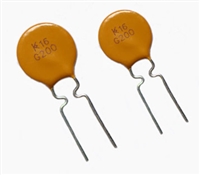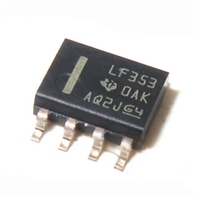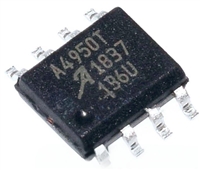OBSOLETE
LMH6560
www.ti.com
SNOSA58D –APRIL 2003–REVISED APRIL 2013
3
0
V
= 10V
S
WITH COPPER FIELD
-3
-6
-9
-12
10M
100M
1G 2G
FREQUENCY (Hz)
Figure 53.
As can be seen in Figure 53 the presence of a copper field close to the transmission line to and from the buffer
causes unwanted coupling effects which can be seen in the dip at about 850MHz. This dip has a depth of about
5dB for the case when all of the unused space is filled with copper. In case of only one area being filled with
copper this dip is about 9dB.
PCB BOARD LAYOUT AND COMPONENT SELECTION
Sound practice in the area of high frequency design requires that both active and passive components be used
for the purposes for which they were designed. It is possible to amplify signals at frequencies of several
hundreds of MHz using standard through hole resistors. Surface mount devices, however, are better suited for
this purpose. Surface mount resistors and capacitors are smaller and therefore parasitics are of lower value and
therefore have less influence on the properties of the amplifier. Another important issue is the pcb itself, which is
no longer a simple carrier for all the parts and a medium to interconnect them. The pcb board becomes a real
component itself and consequently contributes its own high frequency properties to the overall performance of
the circuit. Sound practice dictates that a design have at least one ground plane on a pcb which provides a low
impedance path for all decoupling capacitors and other ground connections. Care should be taken especially that
on board transmission lines have the same impedance as the cables to which they are connected - 50Ω for most
applications and 75Ω in case of video and cable TV applications. Such transmission lines usually require much
wider traces on a standard double sided PCB board than needed for a 'normal' trace. Another important issue is
that inputs and outputs must not 'see' each other. This occurs if inputs and outputs are routed together over the
pcb with only a small amount of physical separation, particularly when there is a high differential in signal level
between them. If routed close together crosstalk will occur and in that case a small amount of the original signal
will appear at the other trace. The same effect will occur internally in the device. This means that signal is
jumping over from one buffer to the other producing a part of the signal of buffer one in the other buffers. To
improve crosstalk performance it is recommended to use a grounded guard-trace between signal lines and to
ground unused pins from the device package. Crosstalk becomes more and more noticeable for the higher
frequencies. For frequencies below 1MHz crosstalk has a signal level as low as −70dB below the incoming
signal. For higher frequencies crosstalk will degrade until about −35dB at 100MHz. (see Typical Performance
Characteristics) The best way to see this, is applying a pulse to one of the buffers and looking at the output of
one of the others. The flat portion of such a pulse represents the lowest frequencies which are highly suppressed
and the edge of the incoming pulse representing the highest frequencies will appear at the output. For reducing
the effect of crosstalk it is recommended to terminate unused inputs and outputs with a low ohmic resistor such
as 50Ω for an input or 100Ω for an output to ground. While measuring the crosstalk, signal was applied to buffer
2 which output was terminated with 100Ω, while measuring the crosstalk output signal at buffer 3, which input
was terminated with a resistor of 50Ω.
Furthermore components should be placed as flat and low as possible on the surface of the PCB. For higher
frequencies a long lead can act as a coil, a capacitor or an antenna. A pair of leads can even form a transformer.
Careful design of the pcb avoids oscillations or other unwanted behaviors. For ultra high frequency designs only
surface mount components will give acceptable results. (for more information see OA-15).
TI suggests the following evaluation boards as a guide for high frequency layout and as an aid in device testing
and characterization.
Copyright © 2003–2013, Texas Instruments Incorporated
Submit Documentation Feedback
25
Product Folder Links: LMH6560






 NTC热敏电阻与PTC热敏电阻的应用原理及应用范围
NTC热敏电阻与PTC热敏电阻的应用原理及应用范围

 GTO与普通晶闸管相比为什么可以自关断?为什么普通晶闸管不能呢?从GTO原理、应用范围带你了解原因及推荐型号
GTO与普通晶闸管相比为什么可以自关断?为什么普通晶闸管不能呢?从GTO原理、应用范围带你了解原因及推荐型号

 LF353数据手册解读:特性、应用、封装、引脚说明、电气参数及替换型号推荐
LF353数据手册解读:特性、应用、封装、引脚说明、电气参数及替换型号推荐

 A4950资料手册解读:特性、应用、封装、引脚功能、电气参数及代换型号
A4950资料手册解读:特性、应用、封装、引脚功能、电气参数及代换型号
